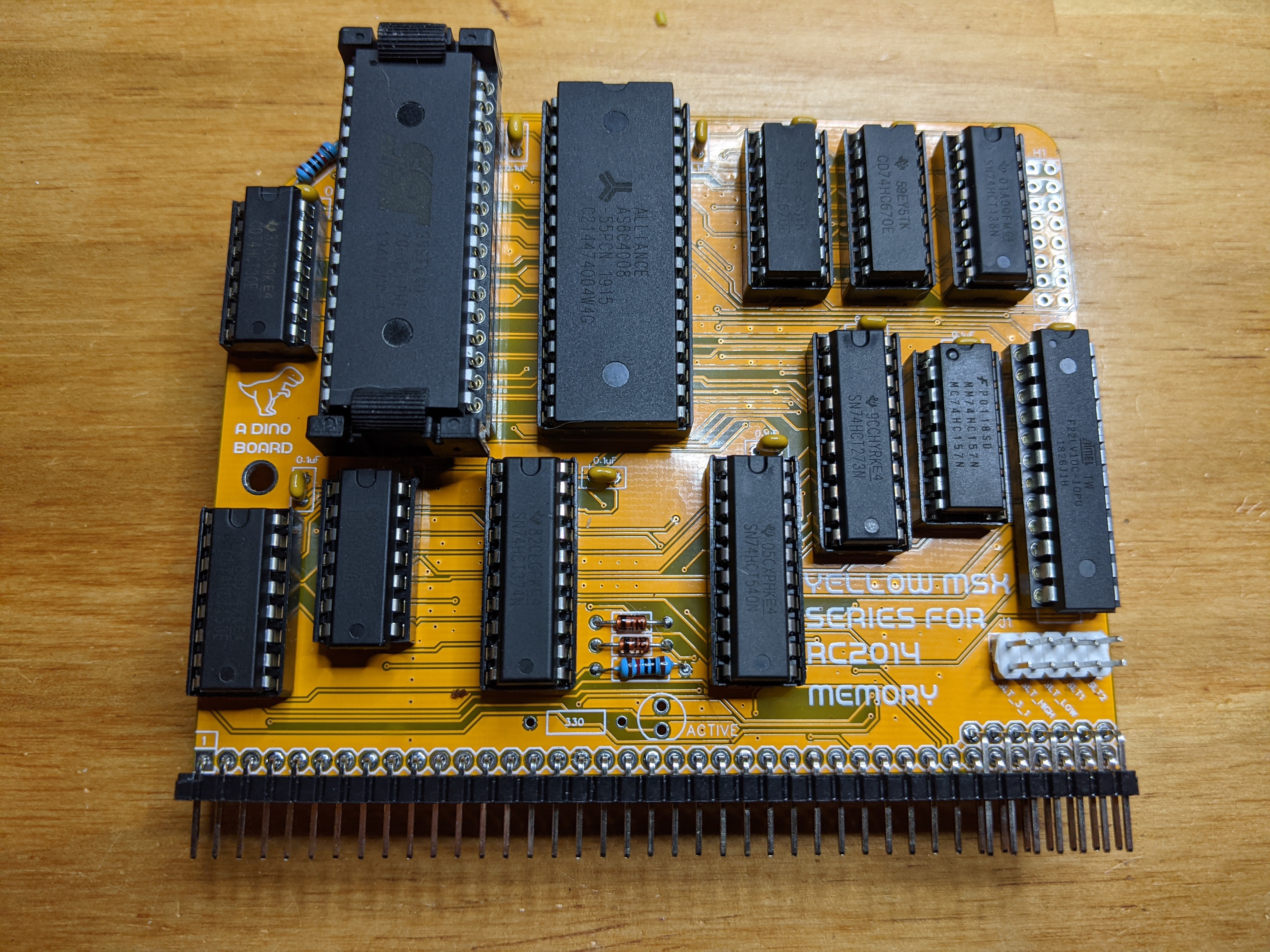I received and assembled the Memory boards. Now i just need some software to put on it!


Over the last couple of weeks, I have been working on the software platform.
Many modern MSX solutions (kits/emulators) use ROM images extracted from one of the original computers. These ROM images are easy to find and download.
I could follow this approach for my build, but I prefer a more open-source and legitimate approach.
Having access to the source code, will allow me to debug and verify the hardware, and be a good starting point to add additional features, such as support for RC2014's serial and IDE boards.
There are 2 key projects that I have been exploring:
1. CBIOS- An open source compatible MSX BIOS. It does not include a Basic Interpreter. It's distributed with many of the MSX emulators with a primary focus to enable the loading of various ROM images (typically games). My fork of this project is at: https://github.com/vipoo/cbios/tree/dean/spike
2. Nextor- This is a fascinating project. It is based on the original MSX-DOS 2 source code - and now officially opened source and apparently ok to distribute. MSX-DOS is a CP/M compatible OS, that is kind of half way between CPM and MS-DOS. An interesting story within the history of the early home computer OS development. My fork of this project is at: https://github.com/vipoo/Nextor/tree/dean/spike
These two projects can be used as a foundation for the boot ROM. They do require a bit of work to meet my needs. The key enhancements needed were:
1. Create a makefile build system for building nextor in linux.
2. Tweaks/fixes to get nextor and cbios working together.
3. Add an embedded virtual disk image within the nextor rom image - so that the key utilities are available on boot - much like how RomWBW cp/m boots up with a ROM and RAM disk. (Nextor already has support for RAM Disk.)
4. Other fixes/enhancements required to boot up on the rc2014 hardware.
I have been able to get this all working within an emulator - so the next step is to flash a ROM and power up!
 Dean Netherton
Dean Netherton
Discussions
Become a Hackaday.io Member
Create an account to leave a comment. Already have an account? Log In.